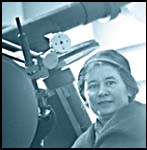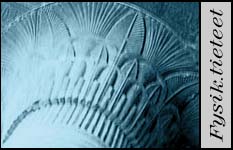




WOMEN OF LEARNING: NAME INDEX | DISCIPLINES | PERIODS | FIRSTS | THE INVISIBLE
LANDMARKS | FACTS | WOMEN'S STUDIES | FRONT PAGE

|
Interest in the exact sciences has not always been considered a predominantly male trait, as often is the case. Before the rise of science and technology around the beginning of the 20th century, many physical and natural sciences could be among the interests suitable for young women of the upper classes. After women gained the right to enroll at the University of Helsinki as students in 1893, as many as half of the female students entered the Faculty of Science. Even before that, Lydia Sesemann was the first Finnish woman to complete a doctoral degree in chemistry in Switzerland. As a result of the strengthening of the position and esteem of physical sciences, women's career prospects started to grow bleak. At the beginning of the 20th century, women were learning to avoid exact sciences, which had few other job prospects to offer besides teaching in schools. Academic jobs were reserved for men, and even the most talented female students had to seek positions with industry and trade, or in schools. For example, Signe Malmgren finished her doctorate in chemistry and applied for a new, second professorship in chemistry that was created at the University of Helsinki in 1908. We know next to nothing about her career beyond that point. As late as in a retroactively comprehensive register of people with academic degrees in physical and mathematical sciences, published in 1960, the women listed in it were normally school teachers - only a handful of them had succeeded in creating themselves careers elsewhere. This did not, of course, mean that women's contributions were not needed in scientific work. There was a need in the area of exact sciences to have access to a competent, cheap work force for demanding, but routine tasks. The Professor of Astronomy at Helsinki, Anders Donner, imported the idea of using women as computers. Between years 1893 and 1930, a number of women employed in measuring and computing tasks were, according to Donner, responsible for some 72 percent of the whole workload of the large astrophotographic project in which the Helsinki Observatory participated in. Only a few women in exact sciences were thus able to do scientific research of their own before the latter half of the 20th century. Among those few were Liisi Oterma (astronomy), Eugenie Lisitzin (physics, marine research), Anna Hietanen (geology) and Salli Eskola (chemistry). These women were lone toilers, with exceptional talent and dedication to help them to face adversity. Of all exact natural sciences, chemistry attracted the largest amount of women. By 1969, both the chairs of the Chemical Society of Finland and its secretary were women. As for mathematics, the association European Women in Mathematics was started in Helsinki in 1986 and has been run from there everc since. Physics and geophysical sciences have, on the other hand, offered quite a challenge for women interested in them. Even in those fields, however, there has been some progress towards the initially hopeful situation that attracted a large number of women to enter the Faculty of Science a hundred years earlier. Eva Isaksson |